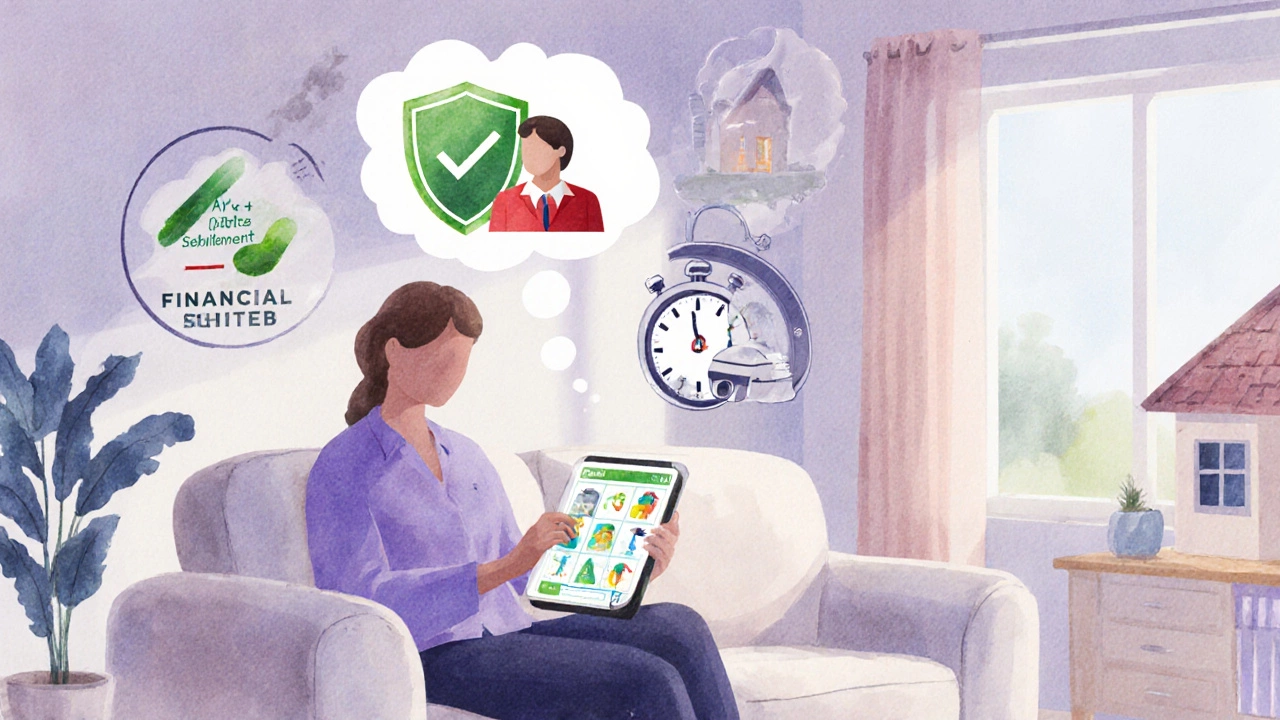State Farm: America’s #1 Home Insurance Company in 2025
 Oct, 9 2025
Oct, 9 2025
Home Insurance Comparison Tool
Compare Top Home Insurance Providers
Use this tool to evaluate key metrics for the top 5 home insurance companies in the U.S. in 2024.
Comparison Results
When you ask, "Who is the number 1 home insurance company in America?" most people expect a simple name. The answer isn’t just a brand-it’s backed by market share, financial strength, and real‑world customer experiences. Below you’ll find a clear picture of why State Farm holds the top spot, how it stacks up against the next best, and what you should weigh before picking a policy.
Quick Takeaways
- State Farm leads the U.S. home‑insurance market with about 16% share in 2024.
- Its AMBest rating of A++ and J.D.Power score of 862 (out of 1000) make it the most financially stable and customer‑friendly option.
- Key discounts include multi‑policy bundling, claim‑free, and home‑security‑system credits.
- The next four biggest carriers-Allstate, Liberty Mutual, USAA, and Nationwide-trail State Farm by 2‑6 percentage points in market share.
- When choosing, focus on financial strength, claim‑handling speed, and coverage flexibility rather than brand name alone.
How We Rank the Top Insurers
To answer the headline question we looked at four hard data points that matter to homeowners:
- Market Share - The percentage of total U.S. home‑insurance premiums each carrier writes. Larger share usually means broader agent networks and more resources.
- Financial Strength - Measured by AMBest, Standard & Poor’s, and Moody’s. An A++ rating signals the company can pay big claims even after a natural‑disaster wave.
- Customer Satisfaction - J.D.Power’s annual Home Insurance Study scores policyholders on claims experience, price, and overall value.
- Claims Efficiency - Average days to settle a claim, based on data from the Insurance Information Institute (III) and publicly released company reports.
Each metric was weighted (40% market share, 30% financial strength, 20% satisfaction, 10% claims speed) to produce an overall ranking.
Why State Farm Leads the Pack
State Farm is a nationwide property and casualty insurer that has dominated the U.S. home‑insurance market for over three decades. In 2024 it wrote roughly $28billion in home‑insurance premiums, representing a 16% market share-the highest of any carrier.
Financial muscle: State Farm holds an A++ rating from AMBest, the highest possible score. This means the firm has more than enough capital to cover massive loss events, a comforting fact for anyone living in hurricane‑ or wildfire‑prone zones.
Customer experience: The 2024 J.D.Power Home Insurance Study gave State Farm a score of 862, topping the list by a solid 15‑point margin. Policyholders cited quick claim approvals and friendly agents as the biggest pluses.
Claims speed: According to the III, State Farm settles 70% of claims within 10 days, beating the industry average of 13 days.
Product depth: The carrier offers standard HO‑3 coverage, optional flood riders, equipment breakdown, and a suite of discounts that can shave 10‑25% off a typical premium.

State Farm’s Core Home‑Insurance Features
Understanding the coverage nuts‑and‑bolts helps you see why the company ranks so high.
- Dwelling Coverage (Coverage A): Replaces the home up to 100% of replacement cost, no depreciation deduction.
- Personal Property (Coverage C): Covers belongings at actual cash value, with an optional replacement‑cost endorsement for an extra $150 per year.
- Liability (Coverage E): Minimum $300,000 bodily injury liability, easily upgraded to $500,000 or $1million.
- Additional Living Expenses (ALE): Pays for temporary housing if the home is uninhabitable after a covered loss.
- Discounts:
- Multi‑policy (home + auto) - up to 25% off each policy.
- Claim‑free - 10% after 3 years without a claim.
- Home security - 5‑15% for approved alarm systems.
- New home - 5% for houses built after 2010.
The online portal and mobile app let you file claims in minutes, upload photos, and track status 24/7. For tech‑savvy homeowners, the digital experience is a big win.
How the Other Top Insurers Compare
| Company | Market Share (%) | AMBest Rating | J.D.Power Score | Avg. Claim Settlement (days) |
|---|---|---|---|---|
| State Farm | 16.0 | A++ | 862 | 10 |
| Allstate | 9.5 | A+ | 845 | 12 |
| Liberty Mutual | 8.2 | A+ | 839 | 13 |
| USAA | 6.4 | A++ | 880 | 9 |
| Nationwide | 5.7 | A+ | 830 | 14 |
All five carriers meet basic solvency standards, but State Farm pulls ahead on three fronts: the biggest market footprint, the highest financial rating, and the fastest claim turnaround among the group.
What to Look for When Buying Home Insurance
Even if State Farm tops the list, the best fit depends on your personal situation. Keep these criteria in mind:
- Coverage Fit: Make sure the policy includes replacement‑cost dwelling coverage, personal‑property protection, and adequate liability limits for your net worth.
- Financial Strength: Look for A++ or A+ ratings from AMBest. A strong rating means the insurer can honor large claims after catastrophic events.
- Claims Process: Review average settlement times and read recent customer reviews. Quick, transparent claims can save you stress when disaster strikes.
- Discount Availability: Bundling with auto insurance, installing a smart home security system, or maintaining a claim‑free record often unlocks 10‑25% savings.
- Local Agent Presence: A nearby agent can be invaluable for on‑site inspections and personalized advice.
Match your priorities against each carrier’s strengths. For example, USAA scores the highest on satisfaction but only serves military families and affiliates. If you’re not eligible, State Farm remains the most universally accessible top performer.

Common Pitfalls to Avoid
- Choosing the cheapest premium without checking coverage limits. A low price often means lower replacement cost limits, leaving you exposed.
- Ignoring flood risk. Standard HO‑3 policies don’t cover flood damage; you’ll need a separate NFIP or private flood rider.
- Overlooking policy exclusions. Check for exclusions on roof age, home‑based businesses, or certain natural perils.
- Letting discounts expire. Many insurers automatically drop bundling discounts if you add a new car or change lenders-stay proactive.
Next Steps for Homeowners
1. Pull your most recent insurance statements and note coverage limits, premiums, and deductibles. 2. Use an online quote tool (State Farm, Allstate, Liberty Mutual, etc.) to get side‑by‑side numbers for the same coverage amount. 3. Compare the quoted premiums against the discount matrix we outlined. 4. Call a local agent to confirm claims handling times and ask for a copy of the insurer’s loss‑run report. 5. Make a decision, then set a reminder to review your policy every 12‑18 months or after major home improvements.
Frequently Asked Questions
Is State Farm really the largest home‑insurance provider?
Yes. In 2024 State Farm held about 16% of the U.S. home‑insurance market, which is the highest share among all carriers, according to the Insurance Information Institute.
Can I get a flood rider from State Farm?
State Farm offers a separate flood insurance policy through partner providers. It’s not included in a standard HO‑3 policy, so you’ll need to add it if you live in a high‑risk flood zone.
How does State Farm’s claim‑settlement speed compare?
State Farm settles roughly 70% of claims within 10 days, faster than the industry average of 13 days, based on 2024 data from the III.
What discounts are most valuable for a typical homeowner?
Bundling home and auto policies can knock 20‑25% off both premiums. Adding a certified alarm system usually saves another 5‑15%, and a three‑year claim‑free history nets a 10% credit.
Is USAA a better option than State Farm?
USAA scores higher on J.D.Power satisfaction (880 vs. 862) but only serves military members and their families. If you’re eligible, USAA can be an excellent choice; otherwise State Farm remains the most universally top‑rated carrier.
